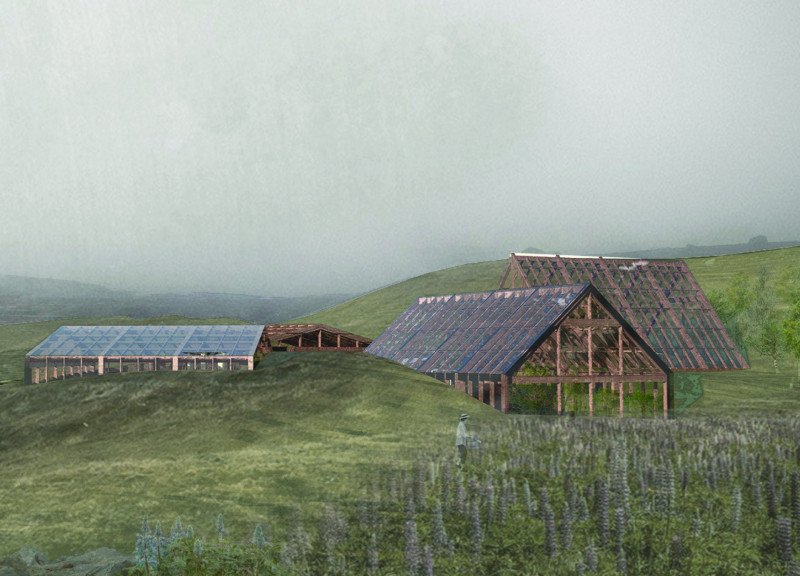5 key facts about this project
The design itself is organized into two primary levels. The basement serves as a multifunctional space that includes areas for storage, kitchens, and composting. It facilitates the gathering and processing of materials, making it a hub for community interaction and resource management. The upper level features greenhouses and communal agricultural areas that allow for education and engagement with food production, aligning with the project’s overarching theme of nourishment.
Sustainability is a key feature of the "Thrive" project. The architectural design incorporates varied materials such as concrete for structural integrity, wood for warmth, and glass to enhance natural light. Additionally, recycled driftwood serves both functional and aesthetic purposes, connecting the building to its natural surroundings. Solar panels on the roof further emphasize the commitment to renewable energy, making the building an active participant in its environment.
The unique distinction of "Thrive" lies in its holistic approach to architectural design. Unlike conventional buildings that often separate functionality from ecological considerations, this project seamlessly intertwines human activities with nature. The architectural layout encourages users to interact with the space actively, collecting resources and participating in the cultivation process. By fostering a connection between people and their environment, "Thrive" serves not only as a structure but as an educational platform promoting sustainability.
The deliberative integration of various design elements, such as a root system metaphor for the building’s structural organization, highlights an innovative approach to spatial design. This is reflected in the use of light and open spaces, which cultivate an atmosphere of growth and interaction. In contrast to traditional architectural methods that often impose strict boundaries, this project encourages a more fluid experience that adapts to its ecological context.
Exploring the architectural plans, sections, and overall design details of the "Thrive" project provides deeper insights into its innovative approach. By reviewing the architectural ideas behind this project, one can appreciate how it reinforces principles of sustainability while also fostering community engagement. For those interested, further examination of the project’s design elements will reveal the intricacies that differentiate it from other architectural ventures.


























